Content marketing, and inbound marketing in general, has lately become one of the trendiest marketing tools. In a world where our eyes are trained to automatically ignore banners and ads posted on the net there rose a need to “reinvent the wheel” and guide in visitors and potential clients by other means.
The basic concept of content marketing is to start by gifting. If you give you will end up reeking in returns. Content based marketing focuses on creating and distributing relevant content which offers visitors (an audience well defined in advance) real value in order to turn them into future clients.
The content need not necessarily have to do with products you are selling or services you are offering, rather, it should focus on relevant topics which may interest your potential customers.
As we’ve discussed in our previous post, many affiliate marketers use content marketing to generate profits.
Content May be Offered In Different Forms:
A Blog – Perhaps the most common way to post content on the web among the content creators. Just like the post you are currently reading, we’ve written many others dealing with subjects we had decided on in advance or that we thought of while providing our services. We’ve published these posts at intervals of several days.
In a blog you can write and explain things, post manuals, elaborate on study cases, provide definitions to a list of terms etc. I will later provide you with possible sources for ideas, pictures, infographics and the likes.
Podcasts – Prerecorded interviews or broadcasts which usually have to do with one certain topic or niche. These can be conducted in a recording studio or even at home with participating parties located a long distance from one another. Podcasts can be distributed via Itunes, SoundCloud and on your website. Personally I regularly follow several series of podcasts (listening to episodes while driving to and from the office), each podcast may be 20 to 50 minutes long. In order for a podcast to be of high quality, on top of providing useful information to listeners, it is important to use professional recording equipment and to edit each podcast before posting it.
Short Videos – If you are performers who have a knack for speaking fluently while being filmed you can produce short videos and post them on your website, on youtube, social networks and other platforms. Such videos may be instructive, free courses, interviews etc.
Newsletters – Distributing emails at regular intervals (weekly / monthly etc.) containing relevant updates. It is advisable to provide high quality content to your contacts and not only notifications regarding discounts or special offers. A mailing list must be constantly maintained, it is essential to gather information regarding how many recipients actually open the email you’ve sent them and how many of them clicked on links embedded in the newsletter, such information will allow you to make informed decisions.
Infographics – Infographics are a great way to offer information, numbers and data easily and in a friendly manner. An infographic may include graphs, maps, sketches, texts etc. Many bloggers and people who surf the net like to share high quality infographics making them a great means of distribution. Creating infographics requires substantial investment including work by graphic designers.
EBooks – Booklets and digital guides, usually in PDF format which may be down loaded or sent by email. A great way to collect contacts is to offer an EBook or free guide to those who fill in a contact form. Booklets and EBooks should provide true value as well as information about you or your organization.
Why Content Marketing is Worthwhile
Mini Brand – Get others to consider you an expert in your field. The higher the quality of the content you offer the more you it will be regarded as a source of valuable information. Those exposed to the content you offer will come to regard you and/or your organization as experts and will return to your website time and time again. Strong, niche based branding will help you obtain customers at low expense as well as to be quoted and your services or products recommended on relevant discussions.
Potential Clients Conduct Research Before Deciding Who To Purchase From – Using high quality, well promoted content (on search engines or by some other effective means), you can reach potential customers at an early yet crucial stage of the purchase making funnel. At the research stage potential clients collect information regarding price range, feedback or even just getting acquainted with goings on in your field.
Once such potential customers have visited your website you can continue to “court” them using remarketing campaigns grabbing their attention again at later stages down the purchase funnel.
A large, well put together remarketing list is a valuable asset in itself, it can be used to increase sales of existing products as well as introducing new ones and arousing greater awareness while strengthening your brand name.
Marketing Costs are On the Rise – PPC campaigns are becoming more and more expensive. If only a couple of years ago you could pay say 2$ per click for a certain search term on an Adwords PPC campaign it may very well be that today the exact same click will cost you 8$, 12$ or even more. Prices for clicks on facebook PPC campaigns have also risen in a similar fashion and may reach several dollars and even more when dealing with niches where competition is fierce. Content marketing may serve as an alternative source of relevant traffic to your website, increasing sales accordingly.
Web Users Tend To Ignore Ads – Studies, both older as well as cutting edge ones, show that our eyes are becoming ever more accustomed to ignoring banners and text ads, this phenomenon has been dabbed “banner blindness“.
On the upside, web users always seek high quality content and so you have the opportunity to engage them by providing them with what they’re looking for thus making them more inclined to use your services now or sometime in the future.
Increasing Traffic – Generally speaking, the more quality content you provide the more traffic you will drive to your website and the more leads and sales you will generate. High quality content means more sharing and natural inbound links. If, on top of all this, you choose to invest in SEO, including intelligent backlinks building and constant adding of content, you will enjoy high Google rankings for long tail search terms. In addition, you will receive direct traffic – visitors who type in your domain name, users who bookmark your website or Google your brand name. Besides increasing traffic, good content helps improve conversion rates, visitors will learn to trust your website and this will eventually lead to increasing the profits it generates.
Collecting Mailing List Contacts – High quality content helps collect leads and building a mailing list of people who are interested in you keeping them updated. Those who register to regularly receive your newsletter will be glad to get emails from you informing them of new content, once in a while (correct timing and frequency of offers is crucial) you may pitch a sale and cash in on your efforts.

Steps For Creating High Quality Content
Define Your Goals – The first step in creating high quality content is defining goals, i.e. collecting leads, increasing awareness to your brand or a new product etc. The content you create should fit the goals you are after. For instance: if you own an online store and your goal is increasing sales, you may choose to write buyer guides or product reviews which you can post on your own website or on other sites which will refer potential customers to yours.
Characterize Your Target Audience – Analyze in advance whose attention it is you wish to grab and divide this audience into groups or personas. Create content which your target audience will find relevant, adjust content essence, language and the professional terms you use accordingly.
Choose Topics – Make out a list of possible topics for you to write or talk about. Later on I will discuss ways and tools you can use to help you find new topics on a regular basis.
Work According to a Preset Timetable – Set a timetable (for a month or two in advance) specifying dates on which you will publish content on specific topics from the list of topics you drafted.
Allocate Time and Resources – Creating high quality content requires effort. If you don’t set time aside to write (or film videos, record interviews etc.) you will not be able to keep things going for long. The frequency in which you can publish new content will be set according to how much time and resources you can allocate towards creating new, high quality content.
Publish Your Content on Different Platforms – The time to publish has arrived? Today there are plenty of platforms on which you can post your content. Two of the most important ones are Outbrain and Taboola. You can also post the content you’ve created without use of PPC campaigns, this is done by sharing on social networks, mailing a newsletter etc. I will elaborate further on the subject of where to publish later on.
Performance Analysis – Once you’ve posted your content it is time to find out how well it performs. The numbers which will help you do this are : Unique visitors (visitors who’ve never before entered your website), advances in Google rankings for long tail search terms, number of shares on social networks, average time spent on site, conversion rate, leads, sales etc.
You can Use Google Analytics for obtaining some of the above mentioned parameters and then optimize your content accordingly.

Click image to open interactive version (via E-Commerce Content Marketing).
What Should I Write About? 8 Tools and Ways to Help You Create a List Of Interesting Topics.
Buzzsumo – A great tool which allows you to type in a topic and get a list of the most popular content related items including ones which have become viral. You will know for each content item how many viewers chose to share it and on which social network, on the full access version you can get data regarding who shared and who forwarded a link. Going over the titles and viewing several of the content items you will get ideas for topics of your own.
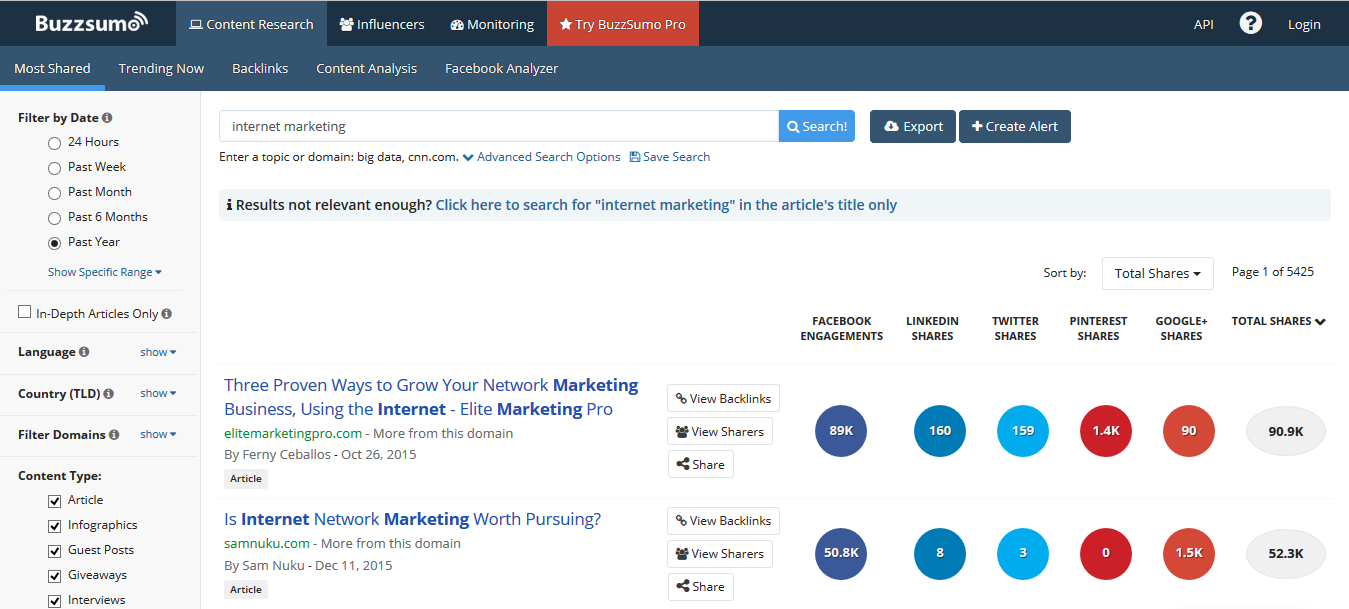
Semrush – Primarily a tool for competition analysis, but if you enter a topic as a search phrase you will get a list of other relevant topics which may give you ideas or serve as sub titles. You can also incorporate the search phrases provided into your content in order to optimize it for SEO purposes, I will elaborate on this later.

Google Suggests – Search your topic on Google. Besides titles and descriptions on the first and second page of the search results you can get ideas and suggestions posted at the bottom of the search results page.
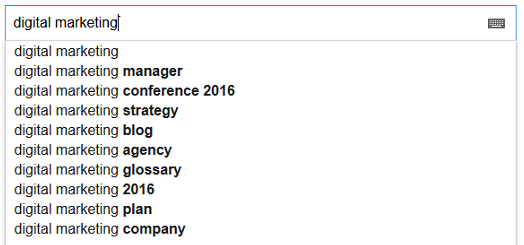
At the bottom of the search results page:
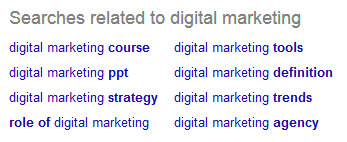
Facebook Groups and Forums – Another great way to find out what everyone is interested in and want to learn more about is to become members of relevant facebook groups
Search Console – If your website already contains content which visitors find on Google you can learn what their exact search phrases were and get ideas for new content.
Google Keyword Planner – Use Google adwords keyword planner in order to find other relevant keywords and derive topics for new content from them.
Google Trends – A great way to know how “sizzling” is the topic you’ve chosen and which search phrases relate to it.
Competitors – Find out what your competitors or colleagues are writing about and come up with new ideas of your own, many sub-titles may serve as topics for posts if you elaborate on them further.
How to Create High Quality Content
So, the question is, how to begin? Once you’ve put together a list of topics and a timetable for posting content on these topics, it’s time to dive in and begin creating the content itself.
Headers and Subtitles – Once the main topic has been chosen I personally begin putting together a post by drafting headers. Once I have 3 – 6 headers which relate to the main topic I move onto phrasing the main title. You can of course do it the other way around, start with the main title and continue on to sub-titles and examples.
It is extremely important to spread the content neatly, use correct punctuation and look at things from a visitor’s viewpoint. No one likes long, dense paragraphs with never ending sentences. Make your content eye pleasing and friendly.
Bear in mind: Typical visitors will scroll down your post, take in the subtitles and read bits of text which grab their attention. If your subtitles are interesting and well written chances are that visitors will stay and read more (the whole post or at least the parts which interest them most). If the subtitles are not up to speed visitors will quickly leave the post or even your website altogether.
Main Title – The main title is like your post’s display window or the hostess at a restaurant whose job it is to lure you in and find you a seat. Phrasing main titles is a topic for a post all on its own. For the time being here are some tips:
– Titles containing an uneven number of words do better than ones with an even number
– Phrase your title in the form of a question
– Titles with negatives do better than ones without any
– Address your target audience in the title
Introduction and Summation – It is advisable to begin every post with an introduction describing what drove you to write the post, you may also begin by telling some type of story which will grab readers’ attention and allow them to “get a feel” of the post.
At the bottom of the post add a few lines which summarize the main points in the post you wrote, things you suggest readers take note of and remember.
A Main Image – Just like the main title, the main image plays a major role in getting visitors to click on the link to your post. Main images are most important on social networks (facebook at the lead) where the link is usually accompanied by a picture on the feed. Images are also important on ads and platforms for content distribution such as Outbrain and Taboola.
Some tips from Outbrain regarding choosing a main image:
– Close-ups work better than images of people engaged in an activity
– Use images which show people your target audience can relate to
– Real life pictures work better than illustrations
Inforgraphics – Infographics are a great way to display content or to summarize parts of it in an eye pleasing, friendly way. In most cases, even if your content is of very high quality, viewers will only read parts of it or browse through sub-titles and look at images. If you use inphographics on your post (given that it is a relatively unique thing to do), chances that you will get visitors to stay on your website will increase dramatically. In addition, if you’ve created a high quality infographic bloggers are likely to share it on their posts and add a credit depicting you as its creator.
There are many websites which offer assimilation of infographics using a bit of HTML code ensuring a credit will appear. You can use such websites to get people to share the infographic you’ve created (like I’ve done with infographics above) or to provide a bit of HTML code enabling bloggers to share it.
Images and Examples – Incorporate pictures and examples into your text, screenshots, and anything else which will help readers understand what you’ve written about. As a reader scrolls down your post their attention will focus on pictures (much like it does on infographics) and these images will help get them to decide on lingering on and reading more.
High quality guides and explanations must include screen captures or detailed video clips showing the stages involved in the process you are describing. On posts with long text it is highly advisable to incorporate interesting pictures which serve as refreshing intervals for readers who are being exposed to so many words. Find out more about buying pictures and finding free high quality images.
Examples need not be just images, written ones also serve to help readers know if they fully understand what you’re saying.
Promoting Topics of Interest and Intelligent Use of Keywords and Phrases – Your text should include key words and phrases relevant to the topic you’re writing about. Make use of Google’s key word planner tool and other above mentioned tools in order to create a list of terms you should incorporate naturally in the text. Texts which include a semantic cloud of professional terms and phrases will do better in search results and will help Google understand what your website is all about.
Optimization – Identifying key words and phrases is only the first part in the optimization process. While writing or once done make sure you’ve incorporated the words and phrases found on the list you’ve drawn up, check that they appear naturally and at adequate density (do not use key words and phrases forcibly on every other sentence, write as naturally as possible). Another important matter is to provide meta tags: create an alluring Title in order to draw visitors in (in most cases the content of the Title meta tag will be identical to the post’s main title). The Title meta tag should include the most important key word / phrase. Write a meta description which will contribute to raising the number of entries you get (improving click trough rate – CTR), i.e. more of those who search and find your post along with links to other similar content will choose you over the competition (the description meta tag does not have bearing on your website’s rankings on Google search results). If you have a wordpress based website you can use the Yoast SEO plugin.
Evergreen Content – Create “evergreen” content, content that will remain relevant forever or at least for a very long time. Opposed to news items or posts about fleeting trends, people will keep searching for evergreen content, search engines are fond of such content as well.
Quotes and Links – Use quotes and links (which open in a new tab) in order to raise your content’s reliability and provide more value to those who read it.
Proof Reading – once you’re done writing read through the post and root out all typing, spelling and punctuation mistakes.
Allow For Comments and Feedback – Remember that comments become part of your content. Many visitors may actually begin by reading the comments and move onto the main body of text from there (similar behavior is common on social networks). If readers refer questions, request more information or even make arguments against what you’ve written – make sure you answer them. If you receive praise and “thumbs up” type of feedback make sure to give thanks.
How Much Should I Write?
A study conducted by SerpIQ into lengths of content items and their google rankings showed the following results:
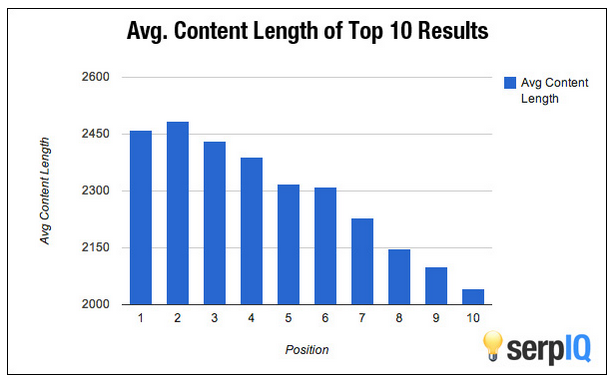
This means that first on Google search results are pages with about 2,500 words and this number drops as we progress down the list of search results.
This does not mean that websites with little text cannot conquer high rankings (there are many other parameters on Google’s search algorithm), but the results of the study clearly show that Google prefers relatively long, high quality content.
Ways to Distribute Your Content
Once you’re done writing and editing your content it is time to distribute it.
Outbrain – A platform for content distribution which offering it as further reading at the end of items on content and news websites. Once you’ve registered you can upload links to your posts and fix a price per click (or choose for the price to be set automatically). You may change the teaser image and title. It is a good idea to conduct A/B testing and try out different titles and images to see which yield the best CTR (click through rate). Links to your posts will appear in leading content websites, you will not be able to choose among them but you can rule out websites from a list of those where your content is being offered. Minimal daily budget is 10$, you can stop the campaign at any time.

Taboola – Another content distribution platform similar to Outbrain.
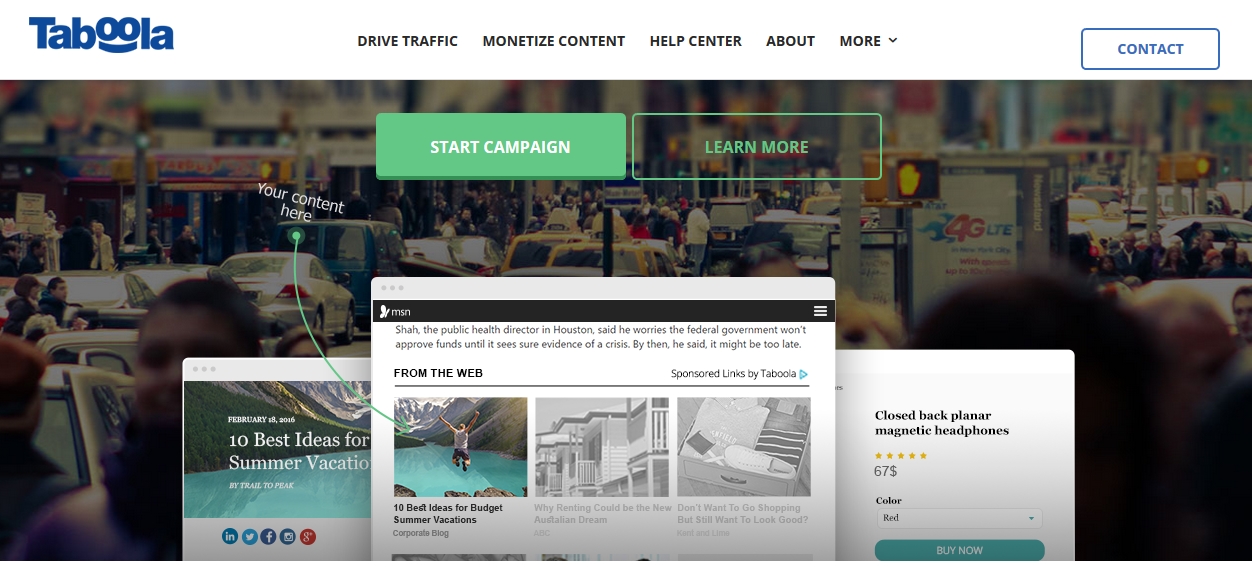
Sharing On Social Networks – Add share buttons to your posts. You can place them at the beginning, the end or as floating bars. If you have a wordpress based website here’s where you can find recommendations for share button plugins.
Paid Advertising on Social Networks – Once you’ve published your post on your business facebook page we recommend you run paid campaigns for promoting your post and collecting clicks, this is better than boosting your business facebook page itself.
Create a relevant target audience (filter by job titles, interests, age, geographic location etc.) and launch the campaign at a budget of your choice.
Social Network Groups – Are you active members of social network groups relevant to you field? Sharing your post on such groups may quickly drive many visitors to your website and expose it or your blog to people who may become frequent visitors.
It is not always necessary to share a post you’ve written. You may find that visitors ask questions as comments to other posts providing an opportunity for you to refer them to another, relevant, post of yours rather than provide a lengthy reply.
Google Display Network – Posting your content on the media network (GDN) may also yield plenty of entries at low costs.
SEO – Links from other blogs and websites will help to advance your post in Google search results and thus receive more views and unique visitors.
Newsletter – Distribute content that you’ve created to members of a mailing list in order to get people to revisit your website. A beneficial side effect of doing this is recipients forwarding the content you’ve sent to colleagues which may then visit your website for the first time.
Examples of Companies Who Actively Engage In Content Marketing
HubSpot – If you’ve Googled for topics related to sales and marketing you’ve most probably come across Hubspot posts, they run two blogs: Sales blog and Marketing blog, they also distribute an EBook, infographics and podcasts. HubSpot is undoubtedly one of best companies from which to learn about content marketing.
Moz – A leading source of content for SEO specialists. A veteran website with a well established blog containing content which is updated extremely frequently (as the dynamic field they are in mandates).
HubStaff – A tool for long distance managing. This company believes in transparency (they reveal all their financial data here). On their blog they discuss topics relevant to SaaS (software as a service), conversion funnels, project management, employee teams etc. Here’s an example of a post of theirs about how they measure the ROI of their content marketing.
Buffer – It is impossible to discuss content marketing without mentioning Buffer. The tool they’ve developed allows for intelligent distribution of status posts on social networks easily and at ideal timing. Just like HubStaff so do Buffer embrace transparency, they run three strong blogs on social media, data transparency and work ethics, IT and technology.
In conclusion, content marketing must play part in the marketing strategy of any business with internet exposure. Top quality content is an asset, investing in creation of such content will yield high, long term returns. An added bonus is personal development, you will improve your writing prowess, learn and gain insight every time you write a new post. Work according to the guidelines provided in this post. with adequate effort and a little patience, you will achieve excellent results. Here’s to your content marketing success. 🙂




